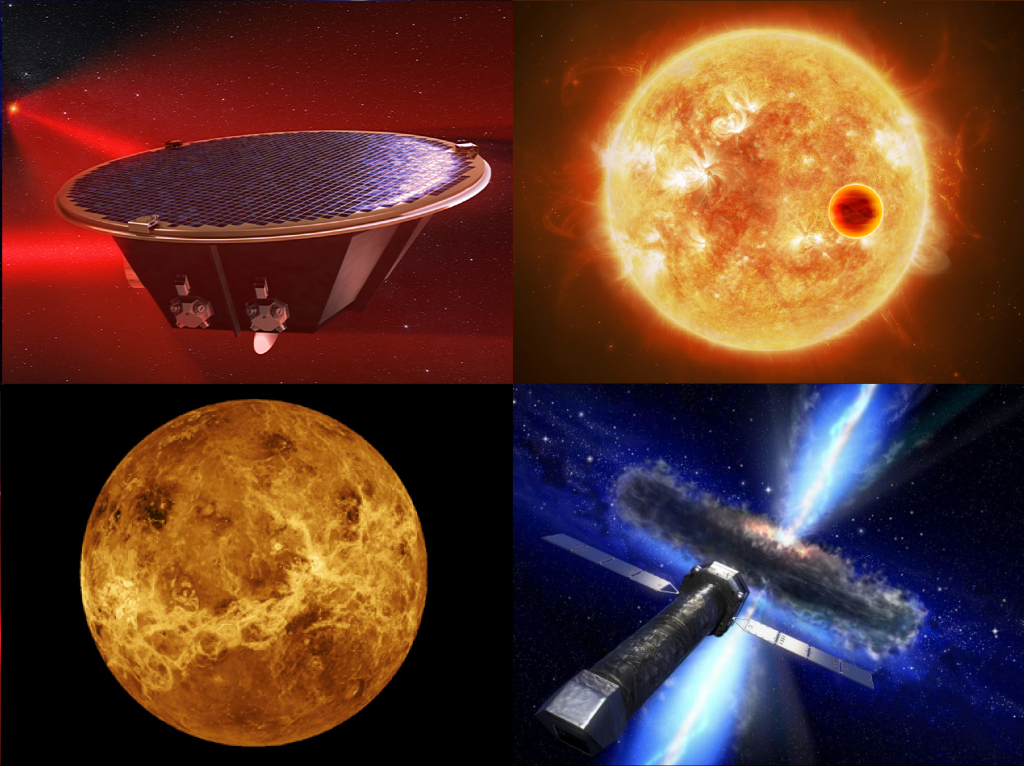Current opportunities in ESA’s scientific space missions
The European Space Agency (ESA) is currently preparing several scientific space missions within its Science Programme – small missions (“S”), medium-class missions (“M”), large missions (“L”) and so-called “Missions of Opportunity”, an instrument through which the ESA’s Science Programme can implement a relatively small, non-enabling participation in a partner-led mission. The budget for medium-class “M” missions is usually around EUR 500 million, large “L” missions EUR 1 billion and EUR 50 million for S-class missions (excluding costs of scientific payload). There are also other opportunities for individual scientists or the possibility to use the data obtained from missions in the operational phase or already completed missions.
Opportunities for Czech scientists
Participation in these missions is also an opportunity for Czech scientists. Usually, the condition for participation in the mission scientific consortia is providing part of scientific payload or other necessary scientific equipment (e.g. ground segment or software). Participation in instrumentation projects can be funded through Czech contribution to the ESA PRODEX programme.
Besides participation in the instrument consortia, there are different opportunities, through dedicated calls (Announcement of Opportunity – AO) of ESA, for participation of individual scientists, usually in the form of Guest Investigators, Interdisciplinary Scientists or to apply for observation time. In some cases, a limited number of positions in the Science Working Team is selected through an AO. Also in these cases, the involved scientists have exclusive access to obtained data and do not have to wait until the proprietary period is over. After the data are published, anyone can access and use the measured data or data products through the ESA Science Data Centre.
ESA’s missions in preparation
At present, it is possible to participate in the instrument consortia of the following missions:
EnVision follows on from ESA’s successful Venus Express that focused primarily on atmospheric research. Planned to be implemented with NASA participation, next-generation EnVision would determine the nature and current state of geological activity on Venus and its relationship with the atmosphere. It would map the surface and obtain detailed radar images, improving on those obtained by NASA’s Magellan in the 1990s to provide greater insight into the geological evolution of the surface.
ATHENA (Advanced Telescope for High-ENergy Astrophysics) is next large, flagship mission of ESA’s Science Programme, currently in study phase („L2“ mission). Large X-ray observatory ATHENA will address key questions in astrophysics, including: how and why does ordinary matter assemble into the galaxies and galactic clusters that we see today? How do black holes grow and influence their surroundings? The planned lunch is in 2028.
LISA (Laser Interferometer Space Antenna) is the following large, flagship mission of ESA’s Science Programme („L3“ mission), which is now in study phase. Three craft, separated by 2.5 million km in a triangular formation, will form the first space-based gravitational wave observatory. Following selection, the mission design and costing can be completed. Then it will be proposed for ‘adoption’ before construction begins. Launch is expected in 2034.
Comet Interceptor is the first “fast-class mission” of ESA’s Science Programme. The Comet Interceptor will in 2028 share the ride into space as co-passenger with ESA’s exoplanet-studying medium-class mission ARIEL. Its goal is to explore truly pristine comet or other interstellar object, like the famed “Oumuamua” that is just starting its journey into the inner Solar System.
Czech scientist can also participate in a number of “Missions of Opportunity”, which offers ESA a flexible tool to participate in missions from partner agencies and which are currently prepared. These are XRISM (X-Ray Imaging and Spectroscopy Mission, cooperation with JAXA), Einstein Probe (cooperation with Chinese Academy of Sciences), MMX (Martian Moons Exploration, cooperation with JAXA) or WFIRST (NASA’s next flagship mission in astrophysics).
Further details on the optional ESA PRODEX program can be found on the websites of the Ministry of Education, Youth and Sports.
Opportunities for scientific participation
Besides participation in an instrumentation consortium, individual scientists may usually apply for different positions that allow them to influence the science of a mission and also access the obtained data before their publication:
- Guest Investigators (GIs) are individual scientists who wish to make use of the data collected by one or more instruments. The GIs are selected after launch are evaluation of their proposals submitted following an open AO process. GIs are invited to participate to specific activities of the Science Working Team.
- Interdisciplinary Scientists (IDs) are expected to focus their efforts on scientific cross-fertilisation to increase the scientific return from a mission. Therefore, IDSs should not reflect instrument specific domains. IDs are as well selected through an AO of ESA.
- Apart from the members of mission consortia, a limited number of members of the Science Working Team, which defines and supervises the different aspects of the mission, are selected through an open AO‘s of ESA, to which Czech scientists are also welcomed to apply.
- If the nature of the mission allows, a fraction of observing time may be allocated to Guest observers through an open AO of ESA, however proposals should not cover the targets included in the core observing programme. First AO’s for observing time are usually issued several months before the launch. Scientists may apply for example for observing time of the CHEOPS mission focused on exoplanets, which was launched on 19th December 2019 and is currently starting its operational phase.
Anyone can access the obtained data and data products from ESA’s Space Science missions through the ESA Science Data Centre which provides services and tools to access and retrieve observations and data from ESA’s missions in astronomy, planetary science and heliophysics like Gaia, Hubble Space Telescope, Cluster, Venus Express or ExoMars.
Should you have any questions about how to join these missions, ESA’s Science Programme or ESA PRODEX, please contact Mr Ondřej Novák from the Department of Research and Development of the Ministry of Education, Youth and Sports, who is also representative of the Czech Republic in the ESA Science Programme Committee.
